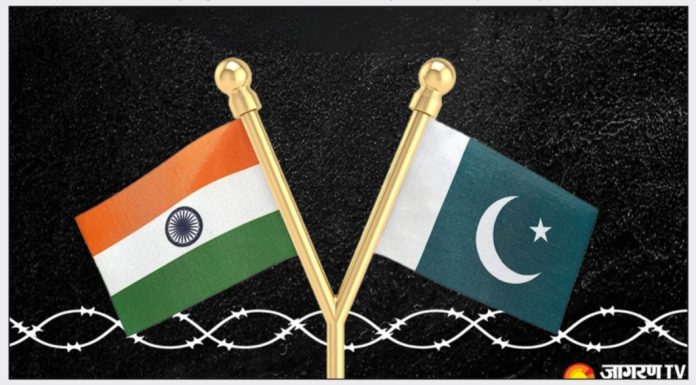By: Peerzada Masarat Shah
In what appears to be a recurring episode of South Asia’s favorite drama series—Borderline Brinkmanship—India and Pakistan have once again pressed the pause button on their mutual hostility. Following an exhilarating season finale filled with buzzing drones, booming artillery, and social media meltdowns, the two nuclear-armed neighbors have agreed to a ceasefire. For now.
The announcement came with the usual fanfare: military officials shaking hands, spokespersons delivering carefully worded statements, and the region collectively holding its breath. According to India’s Foreign Secretary Vikram Misri, both sides agreed to cease hostilities “on land, at sea, and in the air,” starting 5:00 PM IST. Which, if history is any guide, means just enough time for both sides to reload.
Reportedly, the peacemaker-in-chief this time was none other than former U.S. President Donald Trump, who intervened with a tweet that sounded more like a Netflix promo than a diplomatic breakthrough. And just like that—because what better way to end a standoff than a 280-character tweet—the ceasefire was born.
So, what was achieved in this high-octane standoff? Nothing. Zero territorial gains. Zero strategic wins. But maximum noise. We saw sabre-rattling at its finest, and jingoism that would make a war movie blush. The media on both sides got their TRPs, the politicians got their talking points, and weapons manufacturers probably popped some champagne.
But the people? The people got fear. Disrupted lives. Sleepless nights. Economic tremors. And once again, a stark reminder that in the great geopolitical chessboard, they are the pawns.
This ceasefire, of course, is being hailed as a diplomatic “win”—a favorite euphemism for kicking the can down the road. It’s like congratulating yourself for putting out a fire you helped start. And let’s be honest: these “breakthroughs” are less about peace and more about managing optics. They aren’t driven by a desire for reconciliation, but by the exhausting, unsustainable cost of constant hostility.
History books may one day struggle to explain why two neighbors, sharing culture, language, music, and trauma, insist on remaining bitter rivals. Generations have been raised on a diet of mistrust, their dreams scorched by airstrikes and propaganda. And yet, peace always seems just one crisis away from being forgotten.
Ironically, even as the ceasefire was announced, television pundits were already speculating its collapse. Old warhorses in politics and defense circles were busy spinning cautionary tales about “betrayal” and “preparedness.” Because nothing scares them more than lasting peace—it threatens their relevance.
It’s time to admit a hard truth: war-mongering is a business. It sells newspapers, wins votes, and funds billion-dollar defense contracts. A permanent resolution? That’s bad for ratings.
But here’s the inconvenient reality: people on both sides are tired. Tired of losing sons to borders drawn by history. Tired of leaders promising glory and delivering graves. Tired of being told that peace is weakness and that dialogue is dangerous.
The youth—those not yet indoctrinated into this theatre of enmity—are asking questions. Why can we trade memes but not merchandise? Why can we admire each other’s cinema but not meet without suspicion? Why can we connect as humans online, but not as citizens offline?
This ceasefire, if anything, should be a wake-up call. Not a celebration. Not a press release. A wake-up call to stop treating peace as a side gig and start treating it like a national priority. Real peace requires more than handshakes and hollow promises. It demands courage to face the past, confront painful issues like Kashmir, water disputes, and cross-border terrorism—not with aggression, but with honesty.
We need sustained talks, not seasonal truces. Cultural exchanges, not cultural boycotts. And above all, leaders who speak for the people, not over them.
Let’s not kid ourselves: this is not the end of the story. It’s probably not even the middle. But it could—if we’re brave enough—be a new beginning. One where we reject the sirens of war and choose the slower, harder, but infinitely more rewarding path of coexistence.
So here’s to the ceasefire. May it last longer than the trending hashtags it inspired. And may we one day look back at this moment—not as another “pause before the next punch”—but as the time we finally realized that peace isn’t passive. It’s a fight too. One worth winning.
(The article is published in arrangement with Straight Talk Communications.)


